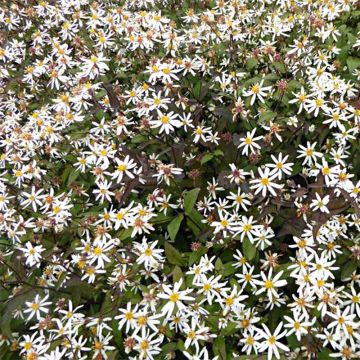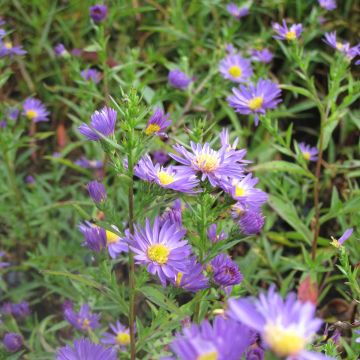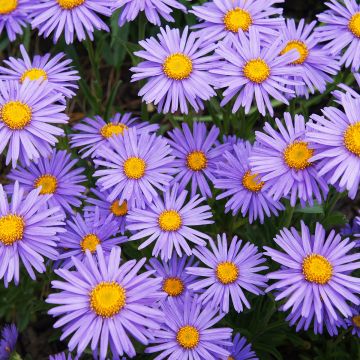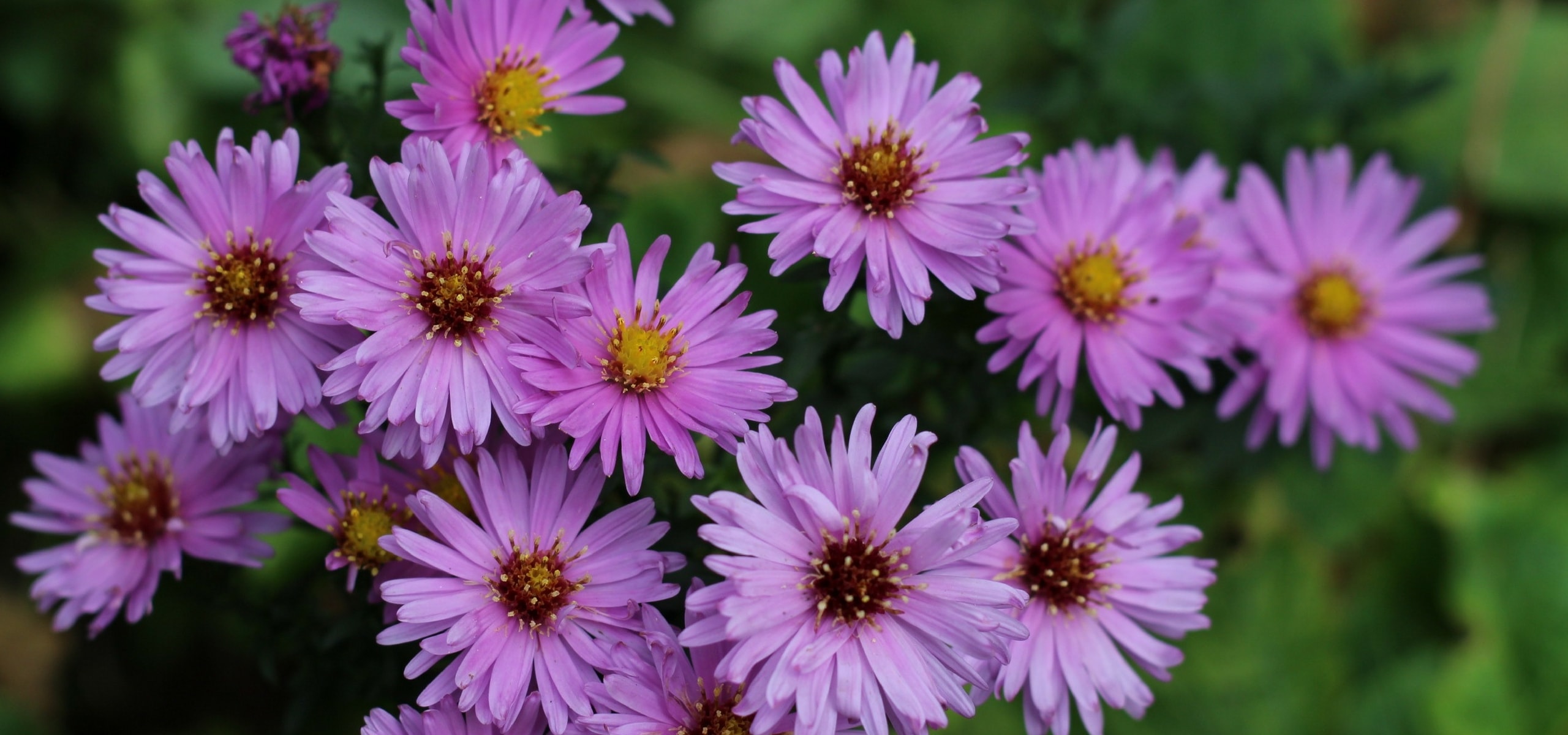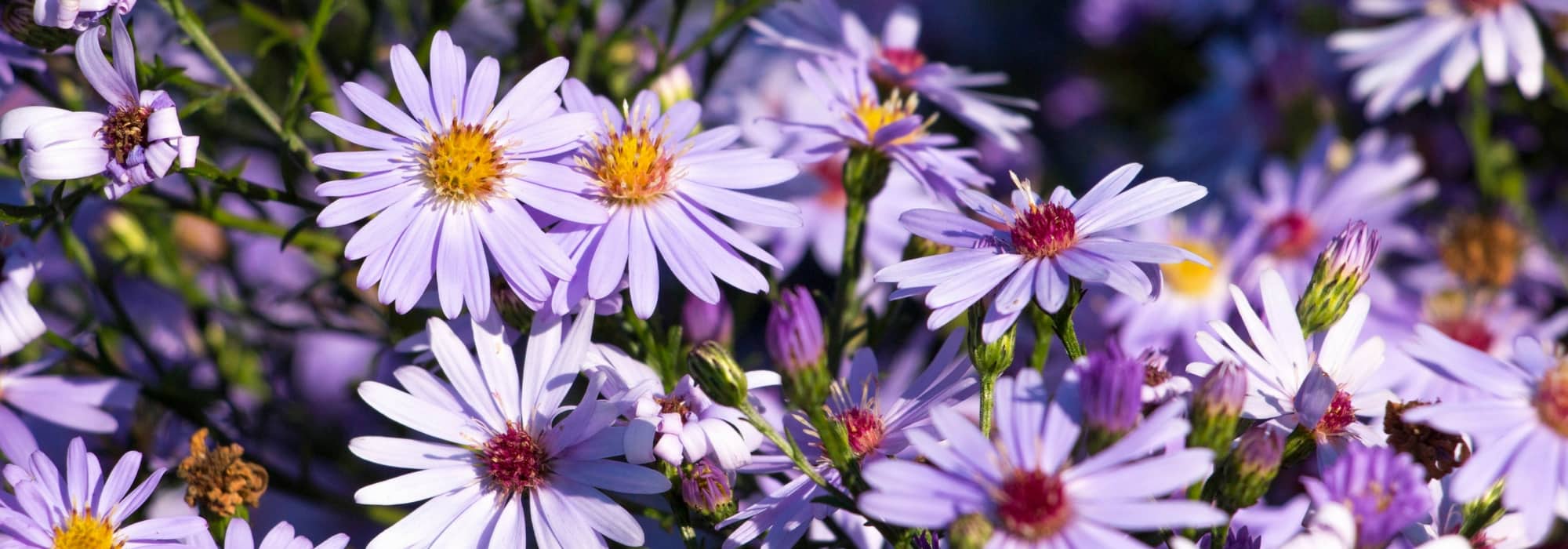

Aster ericoides Golden Spray
Aster ericoides Golden Spray
Aster ericoïdes Golden Spray
Heath Aster, White Heath Aster
Very disappointed with the plants received. Tiny stems in each pot, no leaves or flowers even though it's the flowering season... I ended up finding one locally, in a 15/15 pot with a plant 20cm tall and just as wide for .... 5.99 euros. I bitterly regret this purchase.
Jean Luc , 25/10/2024
Special offer!
Receive a €20 voucher for any order over €90 (excluding delivery costs, credit notes, and plastic-free options)!
1- Add your favorite plants to your cart.
2- Once you have reached €90, confirm your order (you can even choose the delivery date!).
3- As soon as your order is shipped, you will receive an email containing your voucher code, valid for 3 months (90 days).
Your voucher is unique and can only be used once, for any order with a minimum value of €20, excluding delivery costs.
Can be combined with other current offers, non-divisible and non-refundable.
Home or relay delivery (depending on size and destination)
Schedule delivery date,
and select date in basket
This plant carries a 12 months recovery warranty
More information
We guarantee the quality of our plants for a full growing cycle, and will replace at our expense any plant that fails to recover under normal climatic and planting conditions.

Would this plant suit my garden?
Set up your Plantfit profile →
Description
Aster ericoides Golden Spray is a variety of heath aster that often blooms as early as the end of August. It then transforms into a dense ball of small, bright "daisies", white-pink with golden yellow centre. Its very fine foliage, gathered in a slightly fuzzy clumps, makes it look a bit like wild asparagus. It is an excellent perennial plant for wild or low-maintenance gardens, as well as for flower pots.
Aster ericoides belongs to the Asteraceae family and is native to the eastern and central United States. The cultivar 'Golden Spray' has received the Award of Garden Merit from the Royal Horticultural Society in England, akin to the gold medal of the plant world. The plant first develops small lanceolate basal leaves, then herbaceous stems with woody bases. They form a dense clump reaching 60 cm (24in) in height with a spread of 50 cm (20in). Like other Aster ericoides, it is distinguished by its initially erect stems, which then bend under the weight of the flowers. The foliage along the branches is very thin, dark green. It blooms in late summer, in August-September. The plant is covered with a multitude of small white-pink capitula with yellow, sometimes purple, hearts, measuring 1 cm (1in) in diameter.
Aster Golden Spray blends very easily into a rural but also a more sophisticated setting, going well with both poppies and bellflowers, as well as with perpetual roses. Its delightful flowering coincides with the resurgence of creeping rosemary, the grey velvet of Stachys lanata 'Big Ears', Aster amellus and their cultivars 'Rudolf von Goethe' or 'King George'. All these plants are beautiful in early autumn and tolerate alkaline and rather dry soils. To add a touch of lavender pink colour, Aster linariifolius will be welcome in this border composition, as well as the evergreen germander with its lovely foliage. In an ordinary soil, not too dry, combine Golden Spray Aster with hardy chrysanthemums such as 'Emperor of China', known and cultivated in China for over two thousand years, or Chrysanthemum 'Dernier Soleil', and with Persicaria affinis 'Darjeeling Red'. Together these plants will create an incredibly beautiful scene. This Aster also performs very well in a pot.
Aster ericoides Golden Spray in pictures




Flowering
Foliage
Plant habit
Botanical data
Aster
ericoïdes
Golden Spray
Asteraceae
Heath Aster, White Heath Aster
Symphyotrichum ericoides
North America
Other Asters
View all →Planting and care
Plant Aster ericoides Golden Spray in well-drained, rocky, sandy, even alkaline or poor soil. This plant dislikes heavy soils that remain waterlogged in winter. Plant it in spring or September. It is extremely hardy and will adapt to most climates. Ericoides asters are trouble-free: they do not require staking, are disease-free, and can withstand some drought.
Planting period
Intended location
Care
Planting & care advice
-
, onOrder confirmed
Reply from on Promesse de fleurs
Similar products
Haven't found what you were looking for?
Hardiness is the lowest winter temperature a plant can endure without suffering serious damage or even dying. However, hardiness is affected by location (a sheltered area, such as a patio), protection (winter cover) and soil type (hardiness is improved by well-drained soil).

Photo Sharing Terms & Conditions
In order to encourage gardeners to interact and share their experiences, Promesse de fleurs offers various media enabling content to be uploaded onto its Site - in particular via the ‘Photo sharing’ module.
The User agrees to refrain from:
- Posting any content that is illegal, prejudicial, insulting, racist, inciteful to hatred, revisionist, contrary to public decency, that infringes on privacy or on the privacy rights of third parties, in particular the publicity rights of persons and goods, intellectual property rights, or the right to privacy.
- Submitting content on behalf of a third party;
- Impersonate the identity of a third party and/or publish any personal information about a third party;
In general, the User undertakes to refrain from any unethical behaviour.
All Content (in particular text, comments, files, images, photos, videos, creative works, etc.), which may be subject to property or intellectual property rights, image or other private rights, shall remain the property of the User, subject to the limited rights granted by the terms of the licence granted by Promesse de fleurs as stated below. Users are at liberty to publish or not to publish such Content on the Site, notably via the ‘Photo Sharing’ facility, and accept that this Content shall be made public and freely accessible, notably on the Internet.
Users further acknowledge, undertake to have ,and guarantee that they hold all necessary rights and permissions to publish such material on the Site, in particular with regard to the legislation in force pertaining to any privacy, property, intellectual property, image, or contractual rights, or rights of any other nature. By publishing such Content on the Site, Users acknowledge accepting full liability as publishers of the Content within the meaning of the law, and grant Promesse de fleurs, free of charge, an inclusive, worldwide licence for the said Content for the entire duration of its publication, including all reproduction, representation, up/downloading, displaying, performing, transmission, and storage rights.
Users also grant permission for their name to be linked to the Content and accept that this link may not always be made available.
By engaging in posting material, Users consent to their Content becoming automatically accessible on the Internet, in particular on other sites and/or blogs and/or web pages of the Promesse de fleurs site, including in particular social pages and the Promesse de fleurs catalogue.
Users may secure the removal of entrusted content free of charge by issuing a simple request via our contact form.
The flowering period indicated on our website applies to countries and regions located in USDA zone 8 (France, the United Kingdom, Ireland, the Netherlands, etc.)
It will vary according to where you live:
- In zones 9 to 10 (Italy, Spain, Greece, etc.), flowering will occur about 2 to 4 weeks earlier.
- In zones 6 to 7 (Germany, Poland, Slovenia, and lower mountainous regions), flowering will be delayed by 2 to 3 weeks.
- In zone 5 (Central Europe, Scandinavia), blooming will be delayed by 3 to 5 weeks.
In temperate climates, pruning of spring-flowering shrubs (forsythia, spireas, etc.) should be done just after flowering.
Pruning of summer-flowering shrubs (Indian Lilac, Perovskia, etc.) can be done in winter or spring.
In cold regions as well as with frost-sensitive plants, avoid pruning too early when severe frosts may still occur.
The planting period indicated on our website applies to countries and regions located in USDA zone 8 (France, United Kingdom, Ireland, Netherlands).
It will vary according to where you live:
- In Mediterranean zones (Marseille, Madrid, Milan, etc.), autumn and winter are the best planting periods.
- In continental zones (Strasbourg, Munich, Vienna, etc.), delay planting by 2 to 3 weeks in spring and bring it forward by 2 to 4 weeks in autumn.
- In mountainous regions (the Alps, Pyrenees, Carpathians, etc.), it is best to plant in late spring (May-June) or late summer (August-September).
The harvesting period indicated on our website applies to countries and regions in USDA zone 8 (France, England, Ireland, the Netherlands).
In colder areas (Scandinavia, Poland, Austria...) fruit and vegetable harvests are likely to be delayed by 3-4 weeks.
In warmer areas (Italy, Spain, Greece, etc.), harvesting will probably take place earlier, depending on weather conditions.
The sowing periods indicated on our website apply to countries and regions within USDA Zone 8 (France, UK, Ireland, Netherlands).
In colder areas (Scandinavia, Poland, Austria...), delay any outdoor sowing by 3-4 weeks, or sow under glass.
In warmer climes (Italy, Spain, Greece, etc.), bring outdoor sowing forward by a few weeks.



































